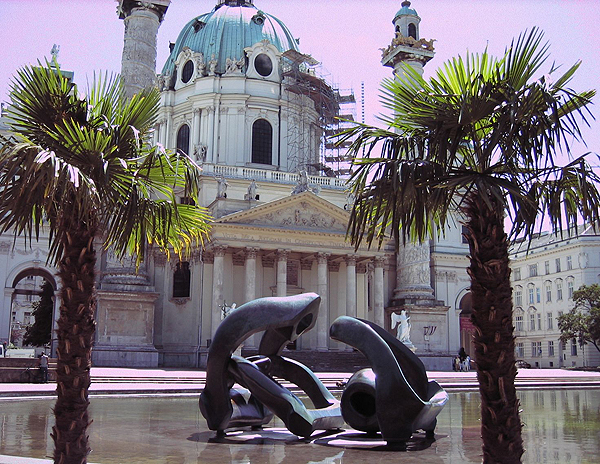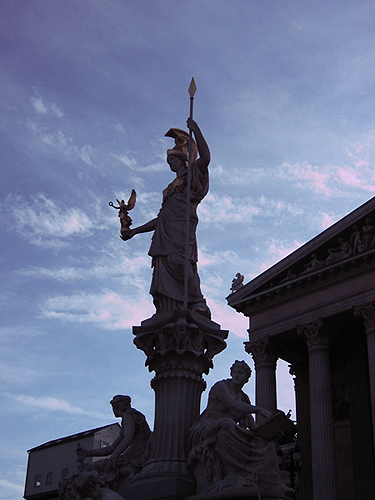Reading Vienna
Today, we read Vienna. The Honors College at the University of Houston presents this program about the machines that make our civilization run, and the people whose ingenuity created them.
There are few cities in the world that are as readable as Vienna. Once the capital of the vast Habsburg monarchy, the city's been the gateway to the "Wild East" of Europe since Roman times. From its situation along the Danube River, it's a major cultural and economic hub, connecting German, Polish, Czech, Slovak, Hungarian, Italian, and Slovenian territories. For centuries, it was also Europe's major outpost on the borders of the Ottoman Empire.

What makes Vienna an easy read is its clear concentric development. Until the 1850s, the city was dominated by its function as the residence of the Habsburg Imperial Court. The small core of the inner city was still closed off by a massive wall like Beijing's Forbidden City. The wall was surrounded by a glacis, sloped open land originally meant to expose attackers as they approached the fortress. This land had been converted to public use by the 1800s, but it meant a large distance separated the inner city from its surrounding suburbs.
After the revolutionary turmoil of 1848, the wall was torn down and a grand new thoroughfare was installed. It was to be studded with magnificent buildings representing major political and cultural institutions. This "Ringstrasse" or circular boule-vard reads like a litany of political compromise, as the monarchy and the new middle class renegotiated their respective rights and roles. Historical revival styles were the architectural rage at the time. Each of these buildings was created as a "total work of art" reflecting cultural roots reaching back into the past. The town hall is Neo-Gothic, as is the Votive Church, reflecting the medieval origins of the Church and town government. The University is Neo-Renaissance, as are the Art and Natural History Museums, a reminder of the revival of learning. The Court Theater is Neo-Baroque, a nod to the theatre's origins under imperial patronage in the 1700s. The Parliament building is rigorously neo-Classical, declaring aspirations to democracy that stretch back to ancient Athens. In front of it, a colossal statue of the goddess Athena stares across at the Emperor's palace.

But Vienna continued to evolve well beyond this historical smorgasbord on the Ringstrasse. Side by side there sit today vibrant Jugendstil or art nouveau buildings, homely public housing structures raised under Red governments, massive bomb-proof flak towers from the Nazi era, Stalinist monuments to the Soviet liberation and occupation, a Holocaust memorial, and now daring works of postmodern architecture. Across the river, a shiny United Nations complex reflects the city's return to global importance. That's where you'll find the UN office for Outer Space affairs.
Vienna is a living library of architectural style, artistic expression, and political posturing. And street after street, as you read it with your feet, you'll find it a real page-turner.
I'm Richard Armstrong, at the University of Houston, where we're interested in the way inventive minds work.
All photographs taken by R. Armstrong.